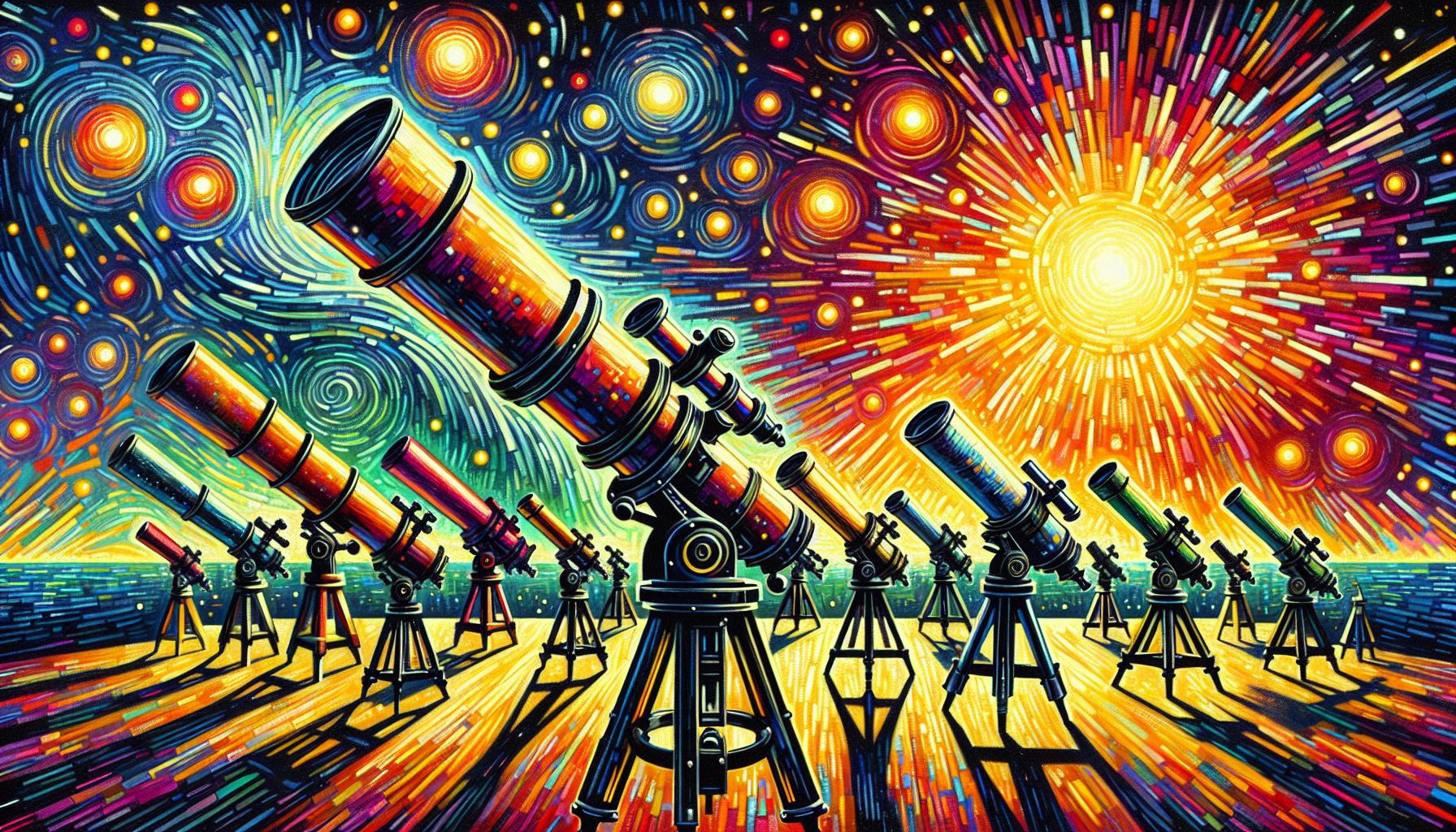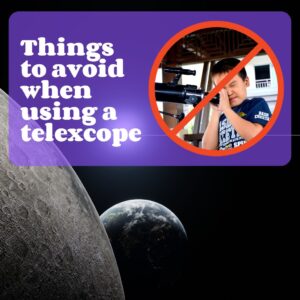This site contains affiliate links to products. I may receive a commission for purchases made through these links.
Choosing the right size Dobsonian telescope can feel like a daunting task. I’ve been there, staring at countless models, scratching my head in confusion. But don’t worry, I’m here to help you navigate this celestial conundrum.
Size matters when it comes to Dobsonians. It’s not just about how big you can go, but also about what you plan to observe. The larger the aperture, the more light the telescope gathers, and thus, the better the image. But remember, a larger scope also means more weight and less portability.
So, whether you’re a stargazing newbie or an experienced astronomer looking for an upgrade, this guide will help you make an informed decision. Let’s dive in and explore the cosmos of Dobsonian sizes together.
What Size Dobsonian Telescope Should I Get for Stargazing?
A larger Dobsonian telescope generally provides more light and better image quality. However, it can be heavier and less portable, so it’s critical to strike the right balance.
When it comes to size, it’s not just about the physical size of the telescope. It’s also about the aperture – the diameter of the mirror or lens that collects light. For star gazing, a minimum aperture of 6 inches is usually recommended.
Let’s illustrate the difference in specs using a markdown table:
| Aperture Size | Light Gathering Power | Magnifying Power | Observable Objects |
|---|---|---|---|
| 6 inch | Good | High | Moon, Planets |
| 8 inch | Very Good | Very High | Moon, Planets, Bright Nebulae |
| 10 inch | Excellent | Extreme | Moon, Planets, Nebulae, Galaxies |
The table above provides a brief comparison of how aperture size affects what you can observe. As the aperture increases, so does the light gathering power and magnifying power, enabling you to observe more distant or fainter objects.
When deliberating what size Dobsonian to get for stargazing, consider not only what celestial objects you want to observe, but also your budget, storage space, and portability needs. It’s essential to balance these factors to find the perfect Dobsonian telescope size for your personal stargazing needs. If you live in an area with light pollution, it might be worth invest in a Dobsonian telescope with a larger aperture to capture as much light as possible.
Remember, though, that a larger aperture also means a larger, heavier telescope. If you plan to transport your telescope regularly, for example to dark-sky observing sites, a lighter, more portable model might be more suitable.
So, when it comes to selecting the right size Dobsonian telescope for stargazing, the optimal choice will heavily depend on your individual circumstances and observing goals.
Understanding the Importance of Aperture in Dobsonian Telescopes
When speaking of telescopes, aperture always takes the center stage. It’s the diameter of the telescope’s main light-collecting lens or mirror. This is more than just a random measurement. The size of the aperture determines two critical aspects of a telescope: its light gathering power and its resolving power.
Bigger apertures gather more light, leading to brighter and clearer visuals. Think about it in terms of photography. A larger aperture in a camera means more light can enter, creating brighter, more vibrant pictures. It’s the same concept with telescopes.
Moreover, larger apertures can also resolve finer details on distant objects. That makes a considerable difference, especially if stargazing is your goal. With a larger aperture, you could see intricate details on Jupiter’s surface or pick out individual stars in far-off galaxies.
Still, larger isn’t always better. Large aperture telescopes often come with challenges in portability and price. Therefore, it’s essential to strike a balance.
Here is an illustration of how aperture size influences what you can observe:
| Aperture size | What can be observed? |
|---|---|
| Small | Moon, bright planets |
| Medium | Distant stars, galaxies |
| Large | Fine details and distant celestial bodies |
Remember, you’ll need to consider other factors like your budget, where you’ll be using your telescope most often, and how much space you have for storage. And don’t forget about your physical ability to handle and transport the telescope!
Light pollution in your area could also play a part in your decision. If your local night sky is highly polluted, you might want to invest in a larger aperture to filter through the urban glow and reveal the stars. However, if you’re situated in a darker locale, a smaller or medium-sized scope might be more than enough to satisfy your stargazing needs.
Evaluating Your Observational Goals and Needs
Now that we’ve established an understanding of how aperture impacts the capabilities of a Dobsonian telescope, it’s time to turn our focus on how your specific needs and goals should guide your choice. Observing goals vary greatly from one individual to another – some might intend to study the planets and the Moon in detail, while others dream of exploring distant galaxies or nebulae.
The latter would require greater light-gathering capacity hence, a larger aperture telescope. This appliance will allow you to see fine details on distant, faint objects. On the other hand, those who wish to study the planets and the Moon may find that a smaller aperture telescope suffices their needs. While it offers slightly less detail, it’s often a more affordable and portable option.
When considering your observational goals, also factor in the frequency of your observations. If you’re planning regular explorations or partaking in extended viewing sessions, especially at different locations, portability becomes essential. Larger Dobsonians can be cumbersome to transport and set up, making them less ideal for frequent relocation.
In addition to personal goals and preferences, consider the impact of your environment. Take into account the level of light pollution in your area. In highly illuminated metropolitan areas, increased light pollution reduces the efficiency of telescopes. You may need a larger aperture to filter out unnecessary light and focus on celestial bodies effectively.
This table can act as a reference for judging what aperture size best fits your needs based on your goals, location, and budget:
| Observing Goals | Location | Budget | Recommended Aperture Size |
|---|---|---|---|
| Detailed study of Moon and Planets | Any location | Lower | Small to Medium |
| Exploration of distant objects | Dark Skies | Higher | Large |
| Frequent movement & setting up | Any location | Mid-range | Small to Medium |
Remember, choosing the right telescope is highly dependent on your individual circumstances. The ideal Dobsonian for you may not be the same as that for another fellow stargazer. No matter what size you decide on, the beauty and wonder of the night sky await.
How to Choose the Right Size Dobsonian Telescope for You
Diving into the world of astronomy and selecting your first Dobsonian telescope is an exciting journey. It’s also a personal decision that encompasses numerous factors, such as observing goals and location.
Let’s begin with your observing goals. Your choice of the telescope size should align directly with your interests. If you’re enchanted by distant galaxies or nebulae, a larger aperture Dobsonian comes recommended. Remember, a larger aperture translates to greater light-gathering power, allowing you to see those distant celestial bodies with remarkable detail.
In contrast, a smaller aperture Dobsonian might be enough for those keen on studying the Moon and planets. Despite having a reduced light-gathering capability, these telescopes provide sufficiently bright and sharp images for closer objects in our solar system.
Next, consider the practicality of transporting your telescope. Are you planning on hauling your instrument to various viewing locations? Or perhaps you aim to frequently observe the night skies from one spot. A smaller Dobsonian telescope is generally more portable, making it an excellent pick for frequent travel. Meanwhile, a larger Dobsonian might be more stationary due to its size and weight.
Portability, however, shouldn’t be your only concern. If you live in an area with a high level of light pollution, a larger aperture might be a necessity. A larger telescope can collect more light, which helps to cut through the light pollution and deliver clearer, better contrasted images. This aspect can be crucial, especially for observing faint distant galaxies or nebulae.
Finally, budget plays a significant role in deciding what size dobsonian you should get. While larger apertures offer better visibility and resolution, they also come at a higher cost. You’ll need to weigh the features against your budget.
As you see, there’s no one-size-fits-all when it comes to choosing the right Dobsonian telescope. Your personal needs and preferences take center stage in this journey. Armed with these considerations, you’re now better equipped to make a well-informed decision.
Factors to Consider When Balancing Aperture and Portability
Opting for a Dobsonian telescope isn’t merely about getting the biggest bang for your buck. It’s also about tailoring my kit to match my specific needs, location of stargazing, and personal convenience. For those juggling between a larger aperture and portability, here’s some food for thought that I’d like to share.
Aperture is the gateway for light in telescopes. A larger aperture does indeed mean more light, sharper images, and finer details of distant celestial bodies. Yet, it’s crucial to remember that it also means more bulk. Larger aperture telescopes are not the easiest to lug around. So, if I plan on frequent escapades to less light-polluted areas, a smaller aperture may serve me better.
Similarly, the impact of light pollution is another deciding factor. If I’m stuck in a location with high light pollution, that is, in a city or a suburb, I just might have to lean towards a larger aperture. With more light-gathering capacity, it can fight off the excess artificial light better.
But that’s not all. As crucial as aperture size is for the overall performance of a telescope, it’s also linked directly to the cost. Nothing hurts a beginner astronomer more than spending a mini fortune on a telescope that’s too unwieldy to use often. So aiming for a balance between the aperture size and the budget is just as important.
Finally, let’s not forget the maintenance requirements. Larger apertures, with their bulkier structures, often require a higher maintenance effort, which can be daunting for some.
A quick summary of all these factors is as follows:
| Factor | Recommendation |
|---|---|
| Frequent Travels | Smaller Aperture |
| High Light Pollution | Larger Aperture |
| Budget | Balance between Cost and Aperture |
| Maintenance | Less for Smaller Aperture |
All in all, with these factors in mind, one can make an informed choice to strike that perfect balance between the aperture and portability of their Dobsonian telescope.
Conclusion: Making an Informed Decision for Your Dobsonian Telescope Size
Choosing the right size for your Dobsonian telescope isn’t a one-size-fits-all decision. It’s all about balancing your personal needs, goals, and circumstances. You’ll need to weigh up the benefits of a larger aperture, like enhanced light gathering power for viewing distant galaxies, against the practicalities of portability and your local light pollution levels.
Don’t forget to factor in your budget and maintenance capabilities as well. It’s about finding the perfect fit for you, whether that’s a smaller aperture for moon and planet viewing, or a larger one for deep space exploration. Remember, the best Dobsonian telescope size is the one that you’ll use and enjoy the most. So take your time, weigh your options, and make an informed decision that suits your personal astronomical journey.
What is the importance of aperture in Dobsonian telescopes?
Aperture in Dobsonian telescopes determines both light gathering power and resolving power. Larger aperture allows for studying distant galaxies or nebulae, while smaller apertures are often sufficient for observing the Moon and planets.
How does light pollution affect aperture choice?
In areas with heavy light pollution, larger apertures are more suitable as they can gather more light, improving visibility. However, for darker areas or for targets with bright natural light (like Moon and planets), smaller apertures suffice.
Should individual goals influence choice of telescope size?
Yes, definitely. If your interest lies in studying distant galaxies or nebulae, choose a larger aperture. However, for studying the Moon and planets, smaller apertures should suffice.
How does portability factor in while choosing a telescope size?
Portability is an important consideration for astronomers who travel frequently for observations. Larger apertures might be optimal in terms of power, but they could be cumbersome to transport. So, a balance should be struck between aperture and portability, based on your needs.
Will my budget and maintenance requirements affect my choice of telescope size?
Yes. Larger telescopes typically cost more and require higher maintenance. So, your telescope size should be decided not just by your astronomical interests but also your budget and willingness to maintain the equipment.
What is the takeaway message of the article?
The key takeaway is the need to find a balance between a telescope’s aperture size and its portability, factoring in individual needs, interests, budget and maintenance capabilities.




